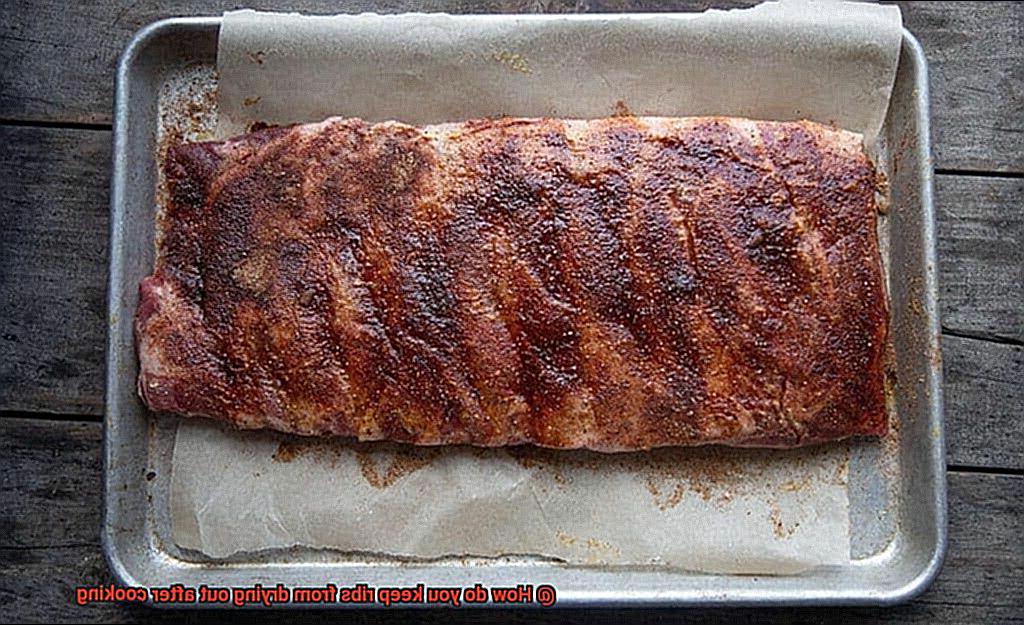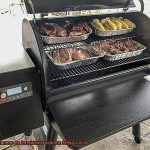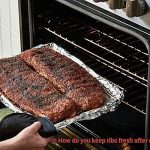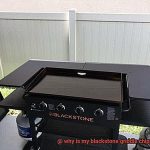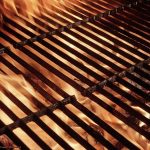Do you know the disappointment of biting into a dry, chewy rib after all that time and effort spent cooking it? It’s frustrating to perfect the seasoning and rub, only to have your meat turn out less than stellar. But don’t despair. There are simple secrets that can transform your ribs from lackluster to lip-smackingly delicious.
The key to juicy, tender ribs is low and slow cooking. Allowing the meat ample time to break down results in fork-tender goodness. And don’t forget about preparation – removing the silver skin and using a marinade can also help keep moisture locked in.
But wait, there’s more. Wrapping your ribs during cooking or using a glaze or sauce can make all the difference. These little tricks ensure your ribs stay succulent throughout the entire cooking process.
Are you ready to elevate your rib game? Keep reading to discover how to keep your mouth-watering meat from drying out after cooking.
Contents
What Causes Ribs to Dry Out After Cooking?
By understanding the factors that contribute to dryness, you can easily prevent it from happening.
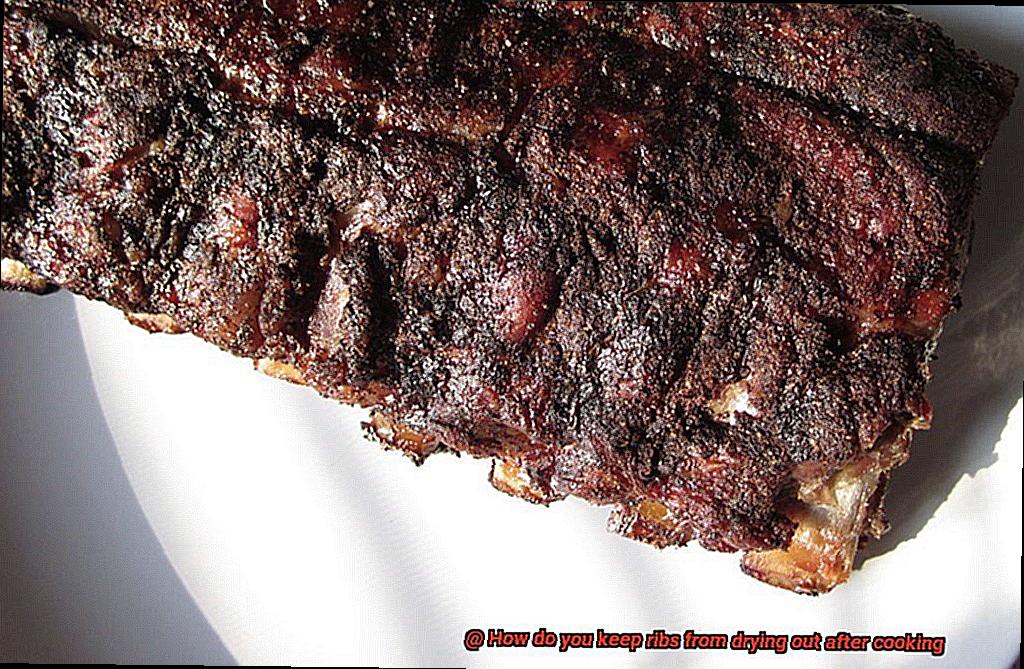
To begin with, the cut of meat is an essential factor in keeping your ribs moist. Different cuts have varying amounts of fat and connective tissue, which play a significant role in retaining moisture during cooking. For instance, spare ribs are fattier than baby back ribs, making them less prone to drying out. If you opt for a leaner cut, be sure to take additional steps to keep it from getting dry.
Temperature control is also crucial when it comes to juicy ribs. Cooking at excessively high temperatures can cause the meat’s moisture to evaporate rapidly, leaving behind a parched and unappetizing product. You must strike the right balance between cooking temperature and time to avoid this pitfall.
Another factor that contributes to dryness is overcooking. Overcooking can make the meat tough and parched, so it’s vital to keep an eye on cooking time. Remove the ribs from heat as soon as they are fully cooked to prevent them from drying out.
Using marinades or dry rubs before cooking is an excellent technique for keeping your ribs moist and packed with flavor. Marinades made with vinegar, oil, herbs, spices, beer or wine break down tough fibers in the meat, infusing flavor and preventing dryness. Dry rubs also help lock in moisture while adding flavor.
Slow cooking is another effective method for keeping your ribs moist. Smoking or using a low-temperature oven or grill allows the meat to cook slowly and evenly, preserving its moisture content. For even better results, try wrapping your ribs in foil or butcher paper during cooking – a technique known as the Texas Crutch.
Lastly, don’t forget to let your cooked ribs rest before serving. Allowing the meat to rest for a few minutes allows the juices to redistribute throughout the meat, making it tender and juicy. Cutting into the meat too soon can cause the juices to escape, leaving you with dry and tough ribs.
Marinades and Dry Rubs: The Basics
It’s time to delve into the world of marinades and dry rubs – two essential techniques that can transform your cooking game.
First, let’s explore marinades. These flavorful mixtures are made up of acid, oil, and seasonings that work in harmony to not only flavor but also tenderize the meat. The acid in the marinade breaks down the tough connective tissues in the meat, while the oil ensures that it stays moist and juicy throughout the cooking process. By allowing your ribs to soak in a marinade for several hours or even overnight, you give the flavors time to penetrate deeply into the meat, resulting in a succulent, delectable end product.
If time is not on your side or you prefer a different flavor profile, dry rubs are the perfect solution. A dry rub is a blend of herbs, spices, and sugar that is generously rubbed onto the meat before cooking. When cooked, this mixture forms a tantalizing crust on the surface of the meat that seals in all the moisture and flavor. With endless combinations of spices and seasonings available, you can tailor your dry rub to suit your personal preferences.
To achieve maximum flavor, it’s crucial to give your meat enough time to marinate or absorb dry rub flavors. Be mindful not to over-marinate or over-season as this can result in an overwhelming taste. With these tips and tricks, you’ll be sure to create lip-smacking ribs that are moist and tender every time.
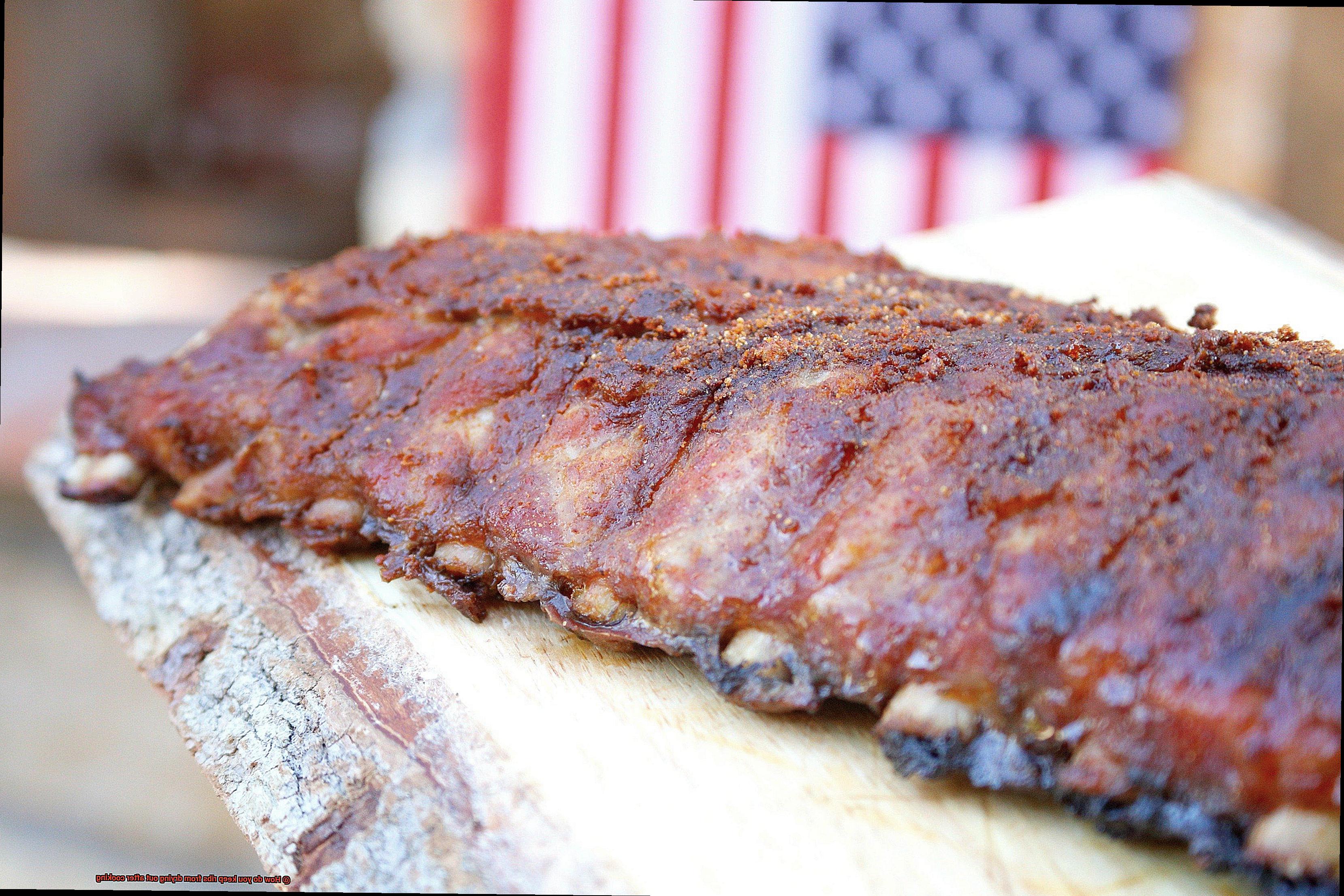
Slow Cooking Methods for Juicy Ribs
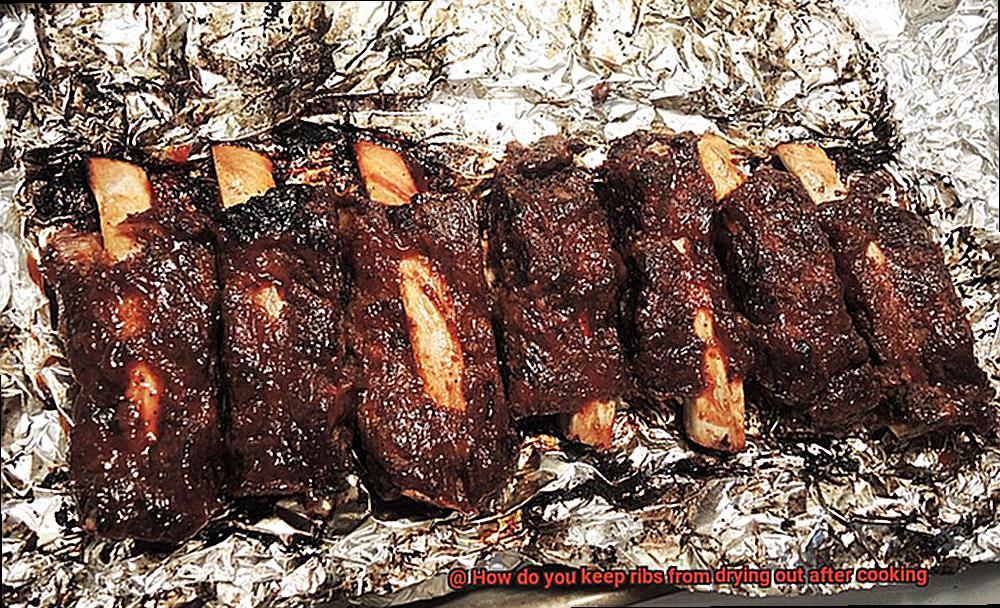
It’s time to step up your game with the tried and true method of slow cooking. By cooking your ribs at a low temperature for an extended period, you’ll create tender and juicy meat that will leave your guests begging for more.
One of the most popular slow cooking methods for ribs is using a smoker. This method infuses the meat with a smoky flavor while keeping it moist and tender. The key is to choose the right wood chips to add extra flavor. Hickory adds a bold taste, mesquite gives a sweet and smoky flavor, while applewood adds a fruity twist.
Another slow cooking method that guarantees juicy ribs is braising. This involves cooking the ribs in liquid (such as broth, beer, or wine) at a low temperature for several hours until the meat falls off the bone. Braising not only keeps the meat moist but also infuses it with the flavors of the liquid it’s cooked in.
Finally, using a crockpot or slow cooker is an excellent option for busy cooks. This method allows you to set it and forget it, leaving your ribs to cook slowly and absorb all the flavors. Adding BBQ sauce or spices will take your ribs to the next level.
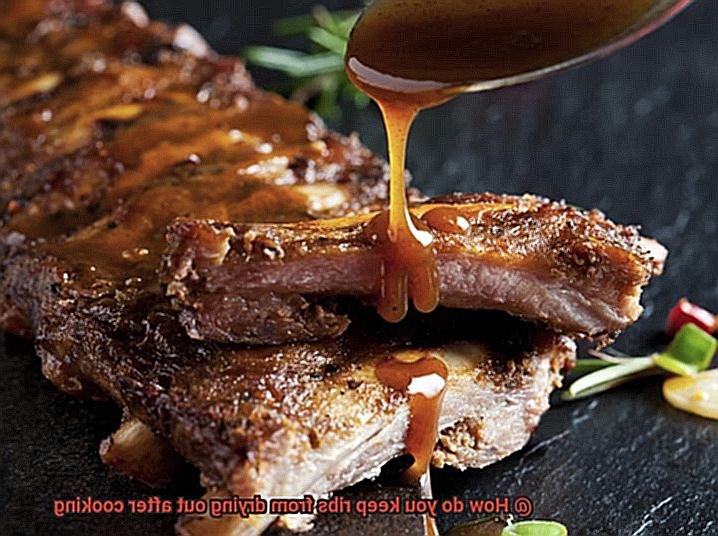
Wrapping Ribs in Foil or Butcher Paper
If you’ve ever spent hours slow-cooking ribs only to end up with dry and tough meat, the solution is simple: wrap your ribs in either foil or butcher paper. This technique, known as the Texas Crutch, has been a game-changer for pitmasters around the world.
Wrapping your ribs in foil or butcher paper has several benefits. Firstly, it helps to retain moisture and prevent the meat from drying out. The steamy environment created by the wrapping allows the meat to cook in its own juices, resulting in a tender and juicy end product. Plus, it’s a great way to speed up the cooking process without sacrificing flavor.
That being said, there are some drawbacks to consider. Wrapping your ribs can affect the texture of the bark on the outside of the meat, making it softer due to the steam created by the wrapping process. If you’re a fan of crispy bark, you may want to unwrap your ribs during the last 30-45 minutes of cooking.
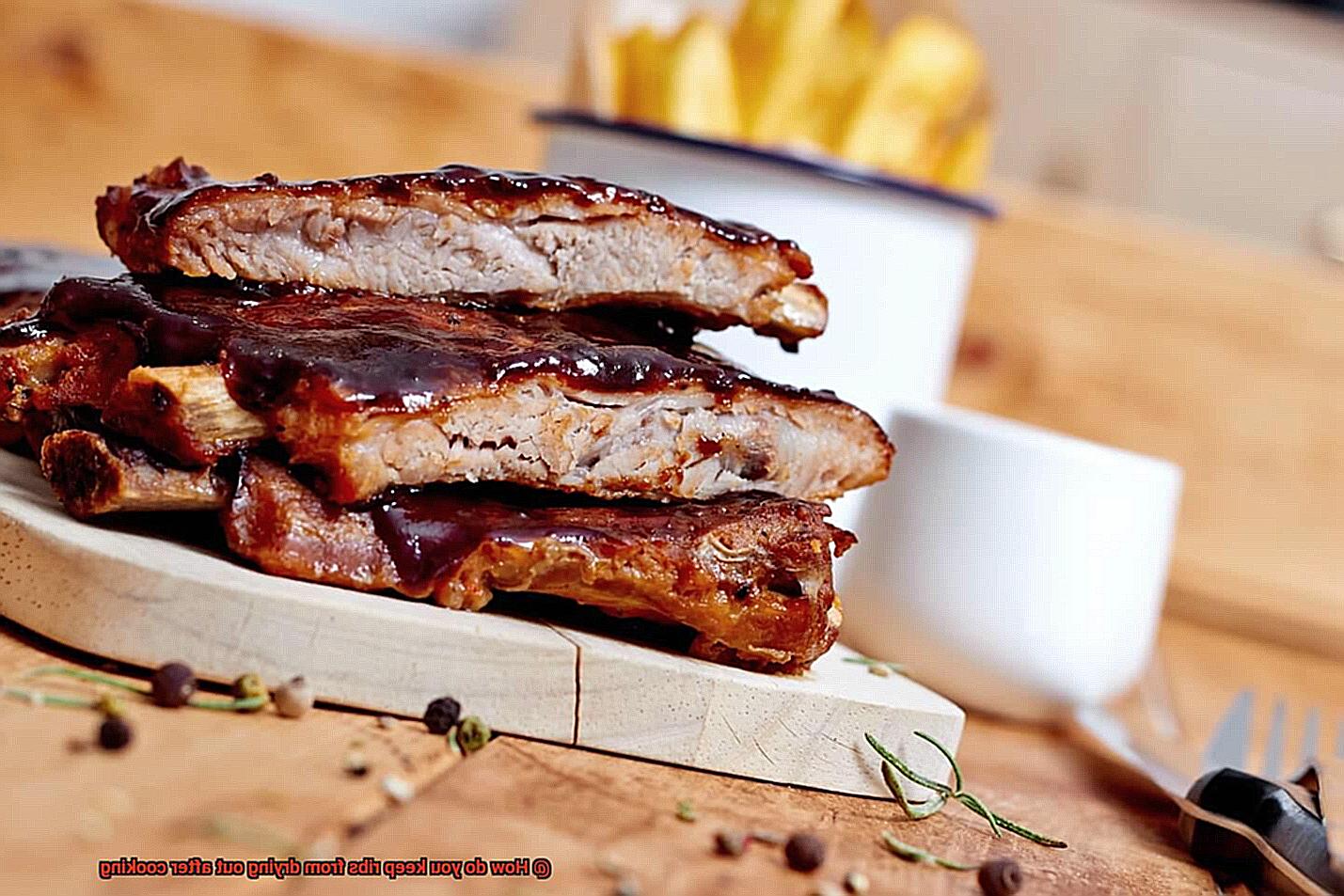
When choosing between foil and butcher paper, keep in mind that foil is better for those who prefer fall-off-the-bone ribs, while butcher paper is better for those who prefer a firmer texture. So, depending on your preference, choose the material that suits you best.
To ensure success with this method, it’s important to wrap your ribs tightly to prevent steam from escaping and ensure that the meat stays moist and flavorful. You should also wrap your ribs when they reach an internal temperature of around 160°F and return them to the grill or smoker until they reach an internal temperature of 195°F-205°F.
Tips for Making the Perfect Marinade or Dry Rub
Look no further than the perfect marinade or dry rub. As an expert in grilling and cooking, I have compiled some tips on how to make the perfect marinade or dry rub for ribs that are juicy and bursting with flavor.
Balancing Flavors
The key to a successful marinade or dry rub is finding the perfect balance of flavors. You want to add enough seasoning to enhance the taste of the meat without overpowering it. When making a marinade, try using acidic ingredients such as vinegar, citrus juices, or wine to help tenderize the meat and enhance its flavor. Adding oil can also prevent the meat from drying out during cooking. For dry rubs, a combination of spices such as paprika, garlic, onion, cumin, and chili powder can create a mouth-watering crust on the outside of the meat.
Allowing Enough Time
One of the most important steps in making a marinade or dry rub is allowing enough time for it to work its magic. Letting the meat marinate or sit with the dry rub for at least an hour before cooking allows the flavors to penetrate deep into the meat and helps to keep it moist during cooking.
Refrigerating
It’s important to always refrigerate the meat while marinating or using a dry rub to prevent bacteria growth. This ensures that your ribs are both safe and delicious.
Marinades vs Dry Rubs
Both marinades and dry rubs have their unique benefits. Marinades use oil, acid, and seasonings to flavor and tenderize the meat while keeping it moist. Dry rubs consist of a blend of spices and herbs that create a flavorful crust on the outside of the meat. Experiment with both to find which works best for you.
Cooking Techniques
When it comes to cooking your ribs, there are several techniques you can use such as grilling, smoking, or baking. The key is to cook them low and slow to ensure they are cooked through but still juicy. You can also try wrapping them in foil or using a pan with a lid during cooking to help retain moisture.
Benefits of Slow-Cooking Ribs
Slow-cooking is the answer. This popular method of cooking involves low temperatures and long cook times, resulting in succulent and flavorful ribs that are sure to impress.
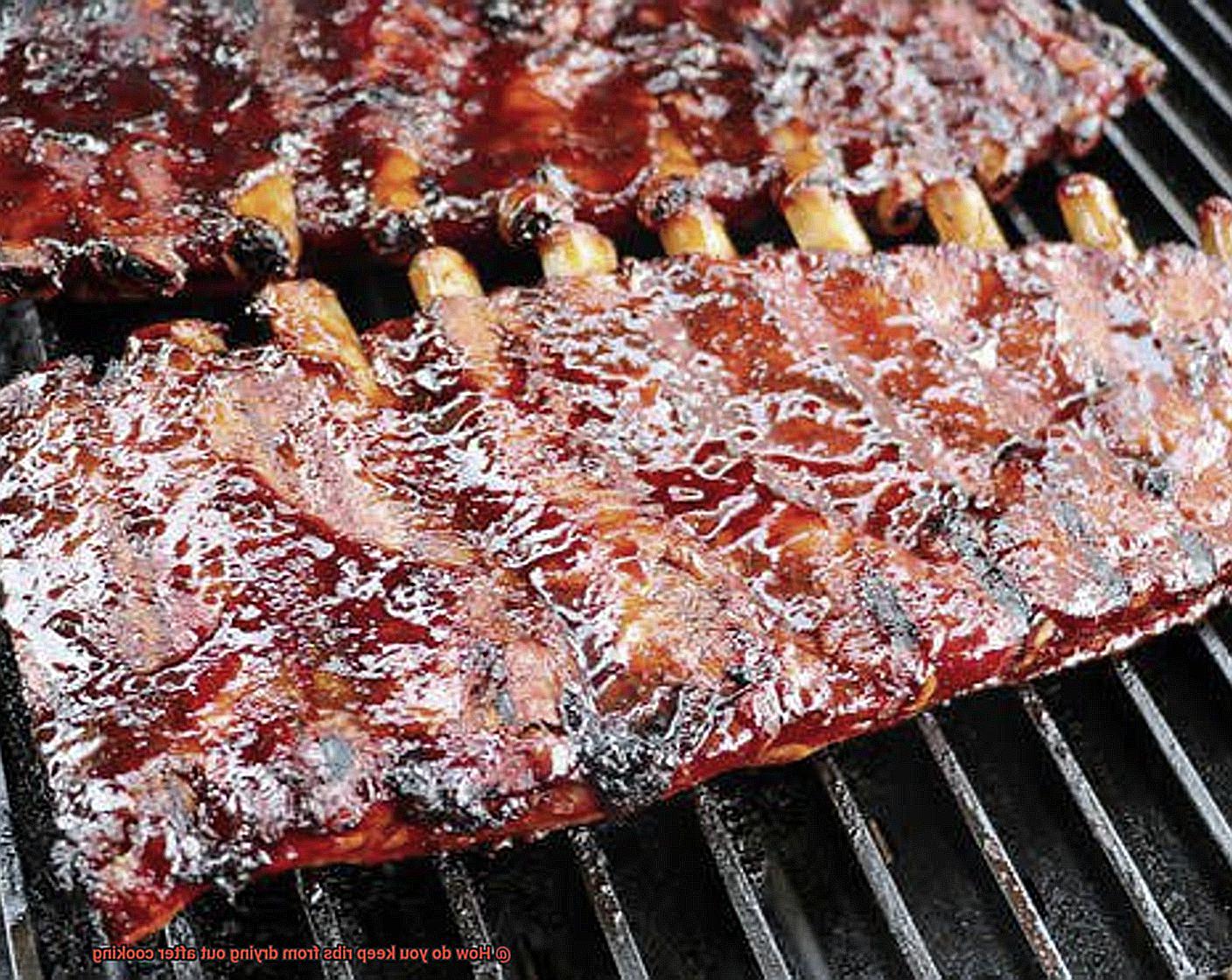
One major benefit of slow-cooking ribs is the even cooking process. The low temperature and extended cook time break down the tough connective tissue in the meat, resulting in tender, melt-in-your-mouth ribs. Slow-cooking also allows marinades and seasonings to fully penetrate the meat, creating a more complex flavor profile.
But it’s not just about taste – slow-cooking also helps to retain moisture in the meat. Cooking ribs at high temperatures can cause moisture to evaporate quickly, leaving you with dry and unappetizing results. However, slow-cooking allows moisture to slowly release as steam over time, resulting in juicy and tender meat that won’t dry out during cooking.
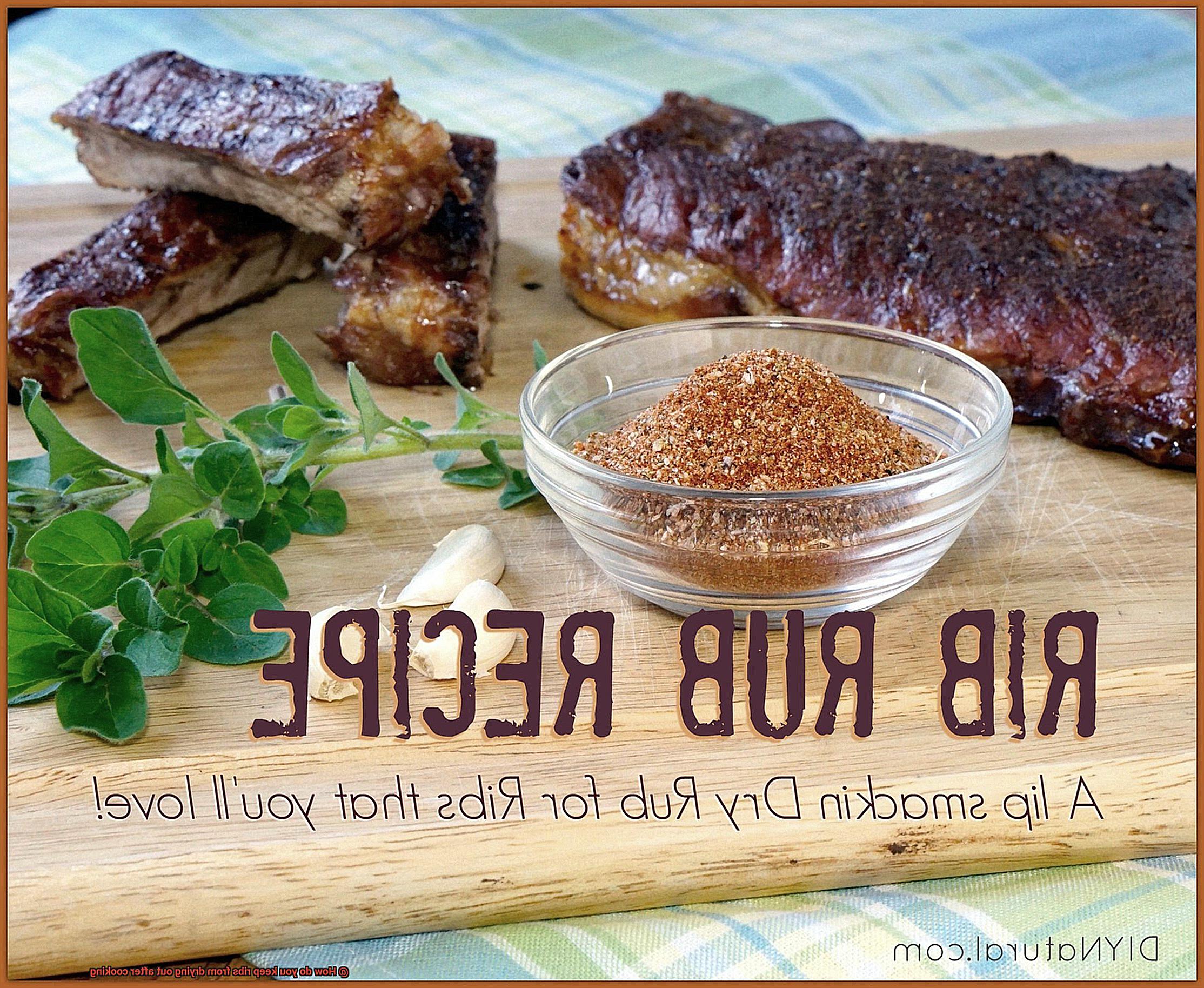
The convenience factor is another significant benefit of slow-cooking ribs. Once you place your ribs in the slow cooker or smoker, you can step away without needing to monitor them closely. This frees up time for other tasks or to prepare additional dishes.
Different Types of Slow-Cooking Methods for Ribs
When it comes to slow-cooking ribs, there are many methods to choose from. Each method has its own unique benefits for producing succulent and juicy ribs. Let’s explore five different slow-cooking methods for ribs that will keep them from drying out.
Slow Cooker
The slow cooker is a versatile and convenient way to cook ribs. This method involves seasoning the ribs, placing them in the slow cooker, adding a liquid like water or broth, and cooking on low for 6-8 hours. The slow cooker provides low and even heat, which helps to keep the meat from drying out.
Smoking
Smoking ribs is a popular method that imparts a delicious smoky flavor while keeping the meat moist during cooking. To smoke ribs, you will need a smoker or grill that can maintain a low temperature for an extended period. Season the ribs with your desired seasoning, place them in the smoker or grill, and smoke at around 225-250°F for 4-6 hours.
Braising
Braising is another effective method for keeping ribs from drying out. This method involves cooking the ribs in a flavorful liquid until they are tender and juicy. To braise ribs, season them with your preferred seasoning, sear them in a pan until browned on all sides, then place them in a pan with enough liquid to cover about 2/3 of the meat. Cover and cook in the oven at around 325°F for 2-3 hours until the meat is fork-tender.
Sous Vide
Sous vide is a relatively new method that has gained popularity in recent years. This method involves cooking food in vacuum-sealed bags in a water bath at a precise temperature for an extended period. To sous vide ribs, season them with your desired seasoning, vacuum seal them in bags, and cook in a water bath at around 145°F for 24-48 hours. Once cooked, finish the ribs on a grill or under a broiler to develop a crispy exterior.
Oven
Slow-cooking ribs in an oven involves cooking them at a low temperature for several hours, similar to using a slow cooker or crockpot. To keep the ribs from drying out, you can baste them with a flavorful sauce or cover them with foil to trap in moisture.
Letting the Cooked Ribs Rest Before Serving
Let me share with you the secret to achieving perfectly tender and juicy meat every time – letting your cooked ribs rest before serving.
Resting your ribs is crucial for allowing the juices to redistribute throughout the meat, resulting in a flavor explosion with every bite. But how long should you let them rest? For most pork rib cuts, a 10-15 minute resting period is sufficient. Make sure to keep them covered with foil or a lid during this time to retain their heat and prevent them from drying out.
- But here’s where it gets exciting – during the resting period, you can add your favorite barbecue sauce or seasoning to the ribs to take their flavor to the next level. This is your chance to create that perfect glaze and make your taste buds dance with delight.
- One thing you must never forget – never cut into your ribs straight after cooking. This will cause all the juices to escape, leaving you with dry and tough meat. Instead, wait until the resting period is over before cutting into your ribs.
wfk8p7HKGno” >
Conclusion
Don’t let all your hard work go to waste by serving up dry and tough ribs. Lucky for you, there are some simple tips and tricks that can take your ribs from mediocre to magnificent. The secret to succulent ribs is slow cooking over low heat, which allows the meat to break down into fork-tender goodness. Proper preparation is also essential – removing the silver skin and marinating the meat before cooking helps retain moisture.
To keep your ribs moist throughout the entire cooking process, try wrapping them in foil or basting with a glaze or sauce. Overcooking or using excessively high temperatures can contribute to dryness, so be mindful of these factors.
Experimenting with different slow-cooking methods like smoking or braising can add depth of flavor while keeping your ribs juicy and tender. And don’t forget about resting your cooked ribs before serving to allow the juices to redistribute throughout the meat.
Creating the perfect marinade or rub requires finding a balance of flavors and giving it enough time to work its magic. By following these tips, you’ll be able to create mouth-watering ribs that are sure to impress every time.

